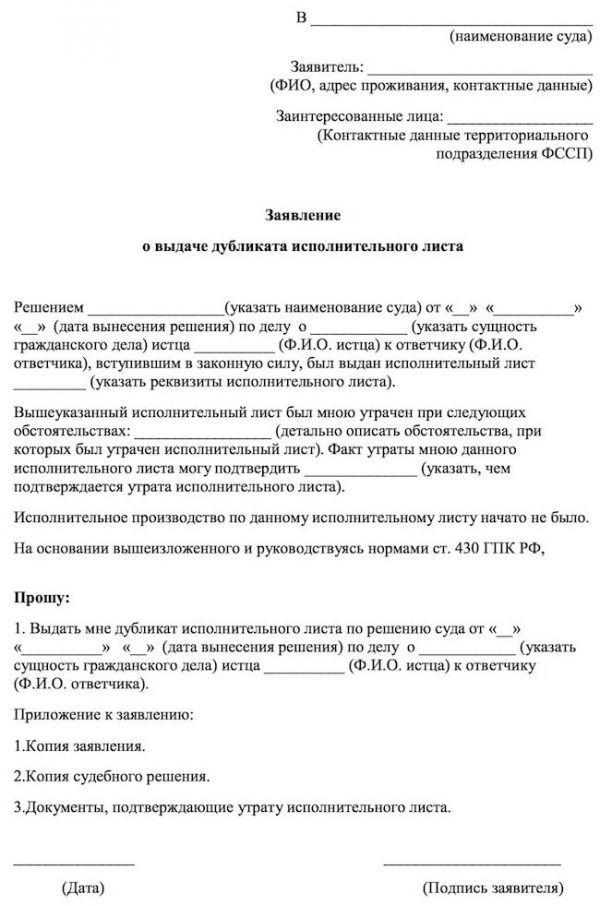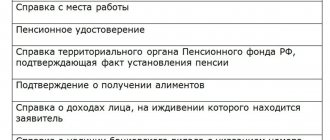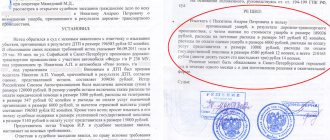Some people, finding themselves in various life situations, are forced to go to court. This is done, for example, with the aim of returning funds or property that they are entitled to, which are unlawfully retained by any citizen or legal entity. If, as a result of the considered process, the controversial issue is resolved in favor of the plaintiff (for example, the debtor was ordered to settle accounts with the person to whom he owed a certain amount of money), he has the right to demand a document that sets out the requirements in relation to the defendant. In this material we will tell you why you need a writ of execution on hand, and what to do next.
The writ of execution is in hand, what to do next?
What is a writ of execution and why is it needed?
Before we talk about what to do and who to go to with the writ of execution you received as a result of the trial, let’s look at what it itself initially represents.
In fact, a writ of execution is an official document issued by the court. As a rule, the required sheet indicates the requirements relating to the defendant, implying the payment of funds to the plaintiff.
A resolution of another body that examined the case and, as a result, adopted a specific decision on your issue, can also serve as the basis for issuing the required paper.
The issuance of a writ of execution is carried out in the course of the implementation of legal relations of the following categories:
- administrative;
- civilian
Despite the fact that there are several options for designing the required paper, it is subject to a certain list of requirements regarding the content of the required document. Thus, the writ of execution must include the following information:
- information about the authorized person;
- information about the citizen obligated to perform specific actions;
- details of the organization that issued the writ of execution.
In total, there are two types of design of the required paper:
- It can be represented by a full decision of the authorized body with requirements.
- Be issued as a separate sheet, which describes in detail the action to be performed.
We would like to draw your attention to the fact that a writ of execution may impose obligations not only on persons directly involved in the meeting, but also on other citizens related to it in some way.
Let's give an example. Imagine that you are a debtor, and according to a court ruling after the last trial, you were ordered to pay the plaintiff money in the form of a quite impressive amount, which you not only do not have on hand, but you will not be able to collect in the near future. In this case, the court will issue a writ of execution to the following persons:
- on you (debtor or defendant);
- to the accounting department of your employing organization
The accounting department, in accordance with the court decision, will deduct part of the wages of the employee obligated to pay the funds to the plaintiff, it turns out that it will also be present in the writ of execution
A writ of execution is a separate category of documents created according to its own rules and implying a specific use. In everyday life, some people, when naming the desired definition, can use it to designate the following different papers:
- a decision or order issued as a result of a judicial proceeding;
- decisions made by bodies of the non-judicial system or officials authorized to resolve cases of administrative offenses;
- an agreement drawn up by two parents or other relatives on the payment of a specific amount of alimony with specified conditions, confirmed by a notary;
- an act issued by state budgetary structures aimed at withholding a certain amount of funds from the individual entrepreneur who owes it;
- a certificate that was issued by a commission resolving labor disputes and similar documents.
It must be borne in mind that the subject of appeals, upon consideration of which the court issues a writ of execution, concerns not only funds previously borrowed and not returned on time. The document sought may set forth the following requirements for material compensation to the defendant:
- for damage caused to the plaintiff’s health;
- cash payments due to the death of a citizen who was the plaintiff’s breadwinner;
- compensation for damage caused by the crime;
- payment of alimony to a relative;
- withholding any amount of money due to the imposition of a punitive sanction.
According to statistics, most often writs of execution are issued following court hearings at which cases related to non-payment of alimony were considered. Usually, in the required documents, demands are made not only to the debtors, but also to the accounting department at their place of employment, as in the example we describe above.
What is the penalty for failure to pay child support? How to bring a willful defaulter to justice, read in a special article.
The procedure for issuing the sheet
According to the rules defined by law, a writ of execution is drawn up and issued by the body that examined the case regarding the filed claim. The extradition is carried out on the same day when, from a legal point of view, a certain outcome of the court case becomes relevant.
However, it also happens that the transfer of the required paper is carried out immediately at the moment a unit of the judicial system makes a final decision on your case.

The plaintiff has the right to demand the issuance of a writ of execution directly to him
According to the letter of the law, there are only two options regarding who will be issued the required sheet.
- In the first case, the writ of execution is handed directly into the hands of the plaintiff who filed an application to initiate proceedings in a specific case.
- In the second, the document from the court is redirected to the Federal Bailiff Service, whose representatives subsequently monitor the fulfillment of the requirements stated in the document.
How to get a writ of execution
It also happens, of course, that the debtor agrees to voluntarily fulfill the demands placed on him, and fulfills the court decision without additional influence, however, this happens quite rarely.
That is why the claimant often asks representatives of the court to hand over a writ of execution to him. This can only be done with the help of a statement drawn up:
- in free format;
- taking into account some important nuances.
To compose and write an application correctly you will need:
- a decision made by a court;
- paper;
- pen or work computer.
We will describe the procedure for drawing up the required application.
Step No. 1 - making a header
Like any other official document, the required application begins with the preparation of the so-called header, which is entered on the sheet in the upper right corner. This segment of the application must contain the following information:
- the address and name of the court that rendered a positive verdict in your favor;
- surname, name, patronymic of the plaintiff, that is, yours;
- the address at which you are officially registered, that is, the address indicated in your passport.
When the header is filled, proceed to the next step.
Step No. 2 - the main text of the application
Just below the header, in the middle of the sheet, it is necessary to title the future application, designating it “application for the issuance of a writ of execution.”
After you specify the title, you will need to start writing the text in free form:
- expressing a request to hand over an executive person to you;
- the request indicated in which is supported by an official basis - a court decision made in your favor.
The text must indicate the following characteristics of the desired solution:
- the number of the document itself;
- the date of its issuance;
- who was the plaintiff in the case (the originator, that is, in fact, it is you).
Step No. 3 – complete filling
Check your text again for:
- errors in the text;
- incorrect information;
- other nuances.
If everything is correct, endorse the application with your personal signature and put the date corresponding to the day of preparation.
In order for the application to the office of the court to take place according to all the rules, it is necessary to additionally copy the required application and hand it over to the secretary so that he or she can mark the receipt of the document on paper.
Hand over to the bailiffs

This option is the best. After all, these officials are engaged in the enforcement of court decisions. But they will be able to exercise their powers only after receiving a writ of execution. What to do next if the defendant does not want to voluntarily pay the amount collected from him by court decision? Firstly, the bailiffs open enforcement proceedings against a certain person. Then they make requests to various services: tax, traffic police, banks. This is all done in order to find property or funds that can be seized to enforce the decision of the justice authority.
This is important to know: Claim procedure for collecting penalties
Of course, if the debtor is officially employed and has a regular income, then this greatly simplifies the matter. In such a situation, the bailiff simply passes the writ of execution to his place of work, and the accounting department, based on this document, makes deductions from the citizen’s earnings. In practice, this is most often what happens.
Is it possible to get a duplicate if a previously received original sheet is lost?
Let's imagine that you received a writ of execution in your hands, but due to a fatal accident, you lost or damaged it. If you think that in this case you will be denied the legal rights that the document you are seeking gives you, you are mistaken.
To be able to document your requirements, contact the court to issue a duplicate. In this situation, the application also occurs in an official format; the document is issued on the basis of an application drawn up in the same form as the application for the original. The only difference between the repeated application and the initial one will be that the request is somewhat modified and now you are requesting the issuance of a duplicate of the original document to replace the old copy that you lost.
In addition, you need to do the following:
- additionally describe the circumstances under which the document was lost by you;
- attach evidence, if any;
- indicate in writing a list of all documents attached to the application as evidence of the loss that occurred.
We would like to draw your attention to the following fact: the statement of loss and request to issue a duplicate of the writ of execution submitted by you will be considered by an unauthorized employee of the structure. An entire court hearing is initiated aimed at establishing the truth of the facts you presented that influenced the loss of the previous document. Provided that the court finds everything that you have said realistic, it will grant your request for a copy of the writ of execution.

Application for issuance of a duplicate writ of execution
The re-issued form is filled out in the same way as the first one, and its legal force is also equal to that of the original document.
Procedure after trial
Having received the writ of execution, the plaintiff, who is now the claimant, must check the presence of all components of the document. This is necessary, because if at least one detail is missing, the bailiff will refuse to perform his duties and this action will be legal. In real life, the debtor's year of birth or place of birth may be missing.
The document must contain the following information:
- Full name and address of the court where the case was heard.
- Case number and title.
- Date of drawing up and delivery of the writ of execution.
- Information about the creditor and the debtor, among them there must be data such as full name, address of residence, registration and birth; for the debtor, the date of birth and place of service, if known, are also required. If the debtor is a legal entity or a state authority, self-government body, or state enterprise, then the name and address will be required.
- The part of a court decision that lists the reasons and requirements for the debtor's obligations and for the transfer of money or property to the other party.
- Bank account number to which the money will be sent.
The writ of execution is in hand, what to do next: where to go
The legislative acts in force on the territory of the Russian Federation define the following possibility: the person collecting the debt from the defendant has the right to independently take any actions aimed at obtaining the financial resources due to him.
We present a list of actions that a plaintiff who wins in court can take after receiving a writ of execution.
Option one. The legal recipient of the collection has the right to go to the bank in which the debtor opened an account and demand that the defendant's deposit be partially or fully written off in his favor. To do this, you need to have reliable information regarding the following nuances:
- you need to know whether the debtor has a valid account;
- have information about which credit institution the person you are looking for opened an account with.

Provided that you have all the information listed, you have the right to draw up an application for debt forgiveness, bypassing the debtor himself, by contacting directly the employees of the banking organization itself
The second option is to apply for a writ of execution at the debtor’s place of employment and request that the debt be written off from his salary. At the same time, it is important to take into account the following point: the commission of the required action becomes possible only when the total amount of funds to be paid from the debtor to the plaintiff does not reach 25 thousand Russian rubles.
The third option implies that if the amount of the debt is less than 25 thousand units of the national Russian currency, the plaintiff can apply not only to his place of work, but also to other organizations that pay the debtor various financial assistance, for example, to the Pension Fund of the Russian Federation.
To whom is the writ of execution sent?
At the state level, a special structure has been identified and created that is responsible for enforcing compliance with the requirements presented in a writ of execution issued by a court or other authority. This structure is called the Federal Bailiff Service.
Employees of the required service exercise control over the implementation of court decisions. This process is initiated upon the application of the party to the proceedings collecting the debt, after receiving which the bailiffs initiate the initiation of proceedings to fulfill the requirements presented by the court.
The required application, mentioned in the previous paragraph, can be submitted for execution by the FSSP:
- direct participants in the proceedings;
- their proxies.
If for some reason the plaintiff is not able to independently write an application to initiate enforcement proceedings, he needs to entrust this to a loved one who will act as his representative. Of course, expressing trust in the preparation of a document with words alone is not enough; you need to contact a notary and, according to all the rules, certify the right of a particular person to exercise representation.

Indicate all the nuances in the petition for the Federal Bailiff Service
In the petition sent to the Federal Bailiff Service, additional nuances can be indicated. For example, to ensure that your demands are guaranteed to be fulfilled by the person who owes you money, in some situations you can demand the seizure of property belonging to him.
As soon as the application is drawn up, send it to the specific branch of the enforcement service corresponding to the place of official registration or residence of the person who owes you, or the legal address of the organization.
The nuances of carrying out the enforcement procedure to demand compliance with the points of the writ of execution will vary depending on who the defendant in your case is:
- an individual;
- any organization.
In the table below we will consider what is meant in this case.
Table 1. Differences in the procedure for collecting funds from organizations and individuals
| Claiming a long time from an individual | Obtaining funds due to the plaintiff from the organization |
In the case where the debtor is an ordinary citizen, or, for example, an individual entrepreneur, enforcement actions will be carried out at the location:
| When any official organization acts as a debtor, all actions performed by representatives of the FSSP will be carried out at the following location:
|
Video - How to submit a writ of execution to bailiffs of the Federal Bailiff Service
Process flow
When the bailiff first receives documents related to your case, they essentially initiate the enforcement process. At this moment, the FSSP employee draws up and writes out a document stating the initiation of a production process that has an executive focus. Since the required paper is sent to the person who owes you for review, it must also contain the following information:
- the period allotted to the defendant to voluntarily fulfill all the points specified in the document;
- a warning about the initiation of forced receipt of money due to the plaintiff or the fulfillment of other requirements of a property or non-property nature from the voluntary fulfillment or failure to fulfill the requirements on time.
Since we are usually talking about the payment of a specific amount, debtors, for the time allotted to them by law, must somehow collect it and return it to the owner. The required time period is normally no more than five days from the moment the person who owes you received notice of the commencement of enforcement proceedings against him and became familiar with the information contained in it.
How to contact the bailiff service to collect a debt
When you fill out the application necessary for the FSSP representatives to initiate the production process based on the sheet you submitted with the requirements determined by the court, you will need to indicate the following nuances in its text.
- First of all, write down on the paper the details of the FSSP department to which you will take the required document.
- Next, you will need to write the name of the court that made the decision on your case and issued the writ of execution, on the basis of which you are now making an appeal.
- Rewrite the court case number correctly.
- Indicate the date of the application and sign. As we have already said, not only a direct participant in the trial, but also his official representative, whose powers are confirmed by a notary, can draw up and submit a document. If it was he who signed the document, you must attach a copy of the power of attorney to the application.
If the debt collector does not have information regarding the place of residence of the debtor, then he has the right to contact the court system and make a request to send a document with an attached list of requirements submitted for execution to the territorial branch of the Federal Service of interest to us.

How to properly interact with service representatives
After the executive service receives the package of listed documents from you, it will launch enforcement proceedings. The period allocated by law for starting a case is three days.
If the requested application was made for the first time, the bailiff assigns the debtor a period for voluntary implementation of the requirements presented to him, equal to five days from the date of receipt of the notification and familiarization with it.
In the event that the requirements are not fulfilled on a voluntary basis within the specified period of time, the official collection period begins, which by law is two months. Those periods during which:
- collection was suspended;
- the process was postponed.
Consequences relevant to the debtor during the course of the process
According to statistics, on the territory of the Russian Federation, debt repayment under a writ of execution rarely happens quickly, despite the fact that the debtor who has overstayed the time allotted to him will face very unpleasant consequences. For example:
- payment of enforcement fee - an additional penalty imposed on the debtor due to the fact that the bailiff is forced to visit the debtor and remind him of the payment of funds (for individuals the minimum amount is one thousand rubles, for legal entities - ten thousand);
- blocking bank cards and accounts opened with credit institutions, etc.
What can you, as a person seeking the funds you are entitled to, do to speed up the development of events and the receipt of the funds due to you? Here's what:
1. Provide the Federal Bailiff Service with as much information as possible regarding the debtor:
- tell us about his financial condition;
- indicate the credit institution in which he has an account;
- tell me the address of his place of residence or legal address if the debtor is any organization.
The more information the bailiffs working on your application and writ of execution have, the faster they will find the debtor and be able to collect from him the funds due to you.
2. Remind the bailiffs as often as possible of your existence and the existence of the case for which you still have not received the funds due to you. Whatever one may say, even the most well-functioning state system employs ordinary people, for whom the human factor plays the same serious role as for salespeople, or, for example, office workers. Moreover, it wouldn’t hurt to have respectful communication during meetings with the bailiff. Despite the official reason for the meetings, a good attitude is another reason to speed up the resolution of the case regarding your issue.
3. The claimant has the right to demand updating of requests sent to branches of banking systems or other organizations. Since you are acting in his role, hurry up to do this, since in this way you will speed up the deadline for receiving the funds due to you, determined by the court to be withheld from the person who owes you.
In what cases can a bailiff refuse to initiate enforcement proceedings?
Despite the fact that, by law, bailiffs are required to initiate enforcement proceedings when the relevant papers are handed over to them, there are a number of situations in which they have the right to refuse you.

Can the recovering party obtain a refusal to initiate a case?
Notification of refusal occurs within three days from the moment the organization receives the papers you submitted. Let's look at the possible reasons for receiving a refusal in the list below.
- If the documents necessary to start the process were transferred to the service without an accompanying statement drawn up by the collecting party or a person representing it, then the service employees have every right to refuse to initiate the process to recover the funds due from the debtor.
- Provided that the documents were submitted by you, but not endorsed by your signature or an authorized person carrying out the required procedure for you on official grounds, you will also be refused.
- If the documents you collected were not presented at the place where enforcement actions were taken, the process will not be initiated, and you will receive a corresponding notification about this.
- If the period given by the court for presenting work on the writ of execution issued to you is exhausted and is not restored at your request, the case will not be started, since at that time the paper basis for its initiation will already be considered invalid.
- Proceedings also cannot be initiated based on a document that is not of an executive nature, since the required paper does not initially comply with the legislative requirements for this purpose.
- If the required writ of execution has already been submitted for execution, and the production process on it was stopped earlier due to the emergence of legal grounds, re-initiation is impossible.
- If the act issued by the court working on your case has not entered into force, while being: a writ of execution or the basis, due to the existence of which the writ of execution was actually issued. The only exceptions to this category can be those papers of an enforcement nature, the specified requirements in which must be enforced directly upon the announcement of the court decision, that is, immediately. However, if such cases are presented, the bailiff will not refuse to initiate a case.
- If the presented executive document, according to the laws in force in our country, cannot be executed by representatives of the FSSP.
- If a document presented to the service for processing and initiating a case was submitted for execution with any violations of legislative acts, its acceptance and work with it will be refused.
- If the writ of execution contains requirements for:
- the return to the territory of Russia of the plaintiff’s child, who was illegally moved beyond its borders;
- the return of a child held by the defendant on the territory of our country;
- exercise of access rights regarding the child in question.
According to the international agreement of the Russian Federation, citizens have the right to count on the initiation of enforcement proceedings in such cases. The refusal will be made only in the case when the child has reached the age threshold when the effect of the sought agreement on him ceases.
When a representative of the Federal Bailiff Service decides to refuse to initiate enforcement proceedings, he must do the following:
- issue a corresponding resolution;
- make a copy of it;
- send the document with the attached papers submitted for processing by the recoverer of funds directly to the person in question, as well as to the court or other authorized body responsible for issuing the writ of execution.
Citizens have the right to eliminate the circumstances listed above. Of course, this may not be the case in every case. Which one is yours, you can check directly with the court or with the same bailiff who refused to initiate the case. After the circumstances preventing the initiation of enforcement proceedings have been eliminated, you have the right to re-submit the same writ of execution and application to the FSSP in accordance with the procedure established by law.
In what cases is enforcement proceedings terminated?
Among the rights of bailiffs is the right to terminate proceedings based on a writ of execution. This is possible if:
- Death of the debtor or claimant.
- Loss of the debtor's ability to execute a court order.
- The claimant's refusal to receive the debtor's property or belongings.
- In cases where the court accepts the claimant’s refusal to receive things.
- Cancellation of writ of execution.
- The emergence and approval by the court of a peace agreement between the parties.
- Cancellation or invalidation of the judicial act on the basis of which the sheet was drawn up.
The duties of bailiffs imply the execution of their powers within 2 months from the date of initiation of proceedings.
If it is necessary to collect debts from legal entities, the bailiff must send to the tax office a request to block funds in all open accounts of the company.
Outside of the actions of the bailiffs, the claimant can contact the debtor's bank with an application and a writ of execution. In this case, the bank must write off the required amount from the debtor’s account, subject to the availability of funds. The transfer is made to the account specified by the claimant in the attached application.
Author of the article
Let's sum it up
Not every person is able to independently answer the question “I have a writ of execution in hand, what to do next.” Please read the information provided in this material carefully and follow it so that you complete the entire process as quickly and efficiently as possible. The main thing to remember is that enforcement proceedings are a serious matter. Don’t force events aggressively, influence them gradually, and everything will work out.

Sometimes going to court is the only chance to get back the funds you are entitled to.








